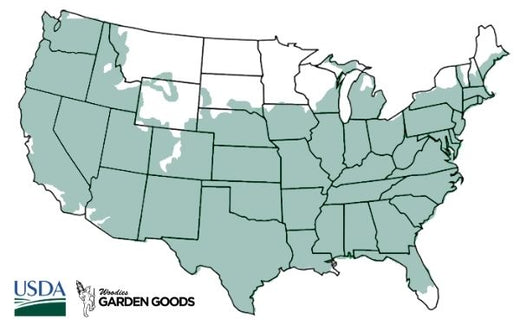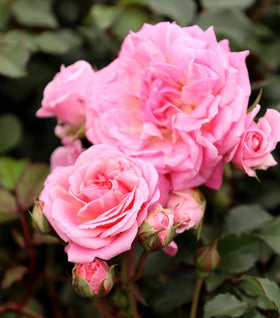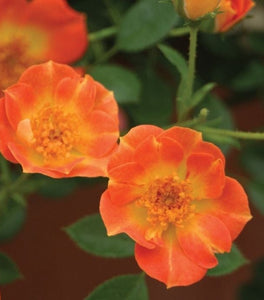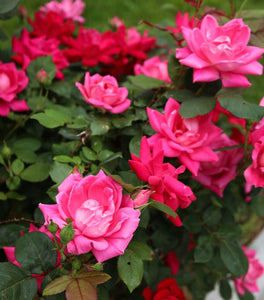Images Depict Mature Plants
Pink Climbing Rose Bushes for Sale Online
New Dawn Climbing Roses are the perfect choice to bring an air of fantasy and romance to your garden with its soft pearlescent pink roses. The pink color of these petals represents new beginnings, often used at weddings and baby showers. An avid climber, these roses work wonderfully to decorate an arbor, pergola, or to soften the look of a north-facing wall on your home. You could also grow them as shrubs and create a magical, sweet-scented hedge. New Dawn Pink Roses bloom from late spring to late summer, with the delicate double blooms appearing in clusters. The handsome green foliage looks wonderful all spring and all fall, and the old wood vines can create winter interest on your trellises or fences. A New Dawn Climbing Rose is a versatile rose choice, great for a wide variety of gardens.
| Hardiness Zone: | 5-9 |
|---|---|
| Mature Height: | 8 to 12 feet |
| Mature width: | 4 to 6 feet |
| Classification: | Deciduous flowering shrub |
| Sunlight: | Full sun to partial shade |
| Habit: | Climbing, or can be a shrub form or hedge |
| Foliage: | Deep green foliage |
| Flower Color: | Soft blush pink |
| Rose Bloom: | Double, 25 petals, fragrant, elegant pointed buds, reblooms from late spring to late summer in clusters, fragrant |
| Pruning Season: | Late fall for winterization, some deadheading all season to encourage reblooming |
| Soil Condition: | Fertile, evenly moist, well draining |
| Uses: | Beds, borders, flowering hedges, containers, mass planting, climbing rose, foundation planting, focal point, specimen, pollinator gardens, cottage gardens |

How to Care for New Dawn Pink Climbing Rose Bushes
Be sure to read our planting instructions to ensure a healthy and happy plant for years to come!
How do I plant a New Dawn Climbing Rose?
When planting your Climbing Rose Bush, dig a hole that is twice as wide and the same depth as the container your rose is potted in, at least 8 to 12 inches away from the structure you want it to climb up. Adding compost, vermiculite or worm casings will help increase the nutrients available to the young root system. Adding peat moss, fir bark, or pine fines will help increase drainage. We recommend an even mix between your native soil and these amendments. Then, position your rose's root ball in the hole and backfill around the roots with the same soil mixture. Do not plant your rose bush too deeply - you should still be able to see the soil it arrived in at the top of the hole, level with the ground. Cover the area with 2 to 3 inches of organic mulch, while taking care to leave space around point where the roots end and branches begin. Water deeply the first time you water them, taking care not to leave water on the leaves. Cover the area with organic mulch, and leave an inch of space around the main stem of the bush.
What is the best way to water my Pink Climber Roses?
You can help prevent disease and encourage a deep and healthy root system by watering your roses in a specific way. In the morning, set up a hose at ground level and soak the soil thoroughly near the drip line of each rose shrub. It is best to water roses by soaking at ground level early in the morning, underneath their foliage. Leaves with water sitting on them that don't dry off quickly are more susceptible to disease. A good rule of thumb for a deep watering is the 5 second rule: for each gallon size that your rose arrived in, water the roots for 5 seconds. The frequency at which you water should be determined by your local weather and soil drainage, which is why it is best to test the soil to see how quickly it dries - on average this is about once a week. A water gator bag or other slow drip tool can help make the chore of watering much easier.
What kind of fertilizer is best for my Climber Roses?
We always recommend that gardeners utilize organic fertilizer products that are made with high quality ingredients. This is why we recommend products such as Espoma Rose-tone, Espoma Flower-tone or Espoma Bio-tone Starter Plus. These products are easy to use, as you simply mix the slow release granules in the soil around the drip line of your rose, under the mulch if possible. It is best to fertilize your roses first in early spring, just before spring growth begins. Then, follow up again every 4 to 6 weeks between Mother's Day and Memorial Day. This is especially good for reblooming roses such as the New Dawn Climbing rose. Stop fertilizing in the late summer or early fall, before last blooms have stopped, since it is soon time for your roses to begin entering dormancy - fertilizer will interrupt that natural process.

How do I prune New Dawn Climbing Rose Bushes?
Pruning is an essential part of growing prime rose bushes. You can help guide how your roses focus their energy by careful pruning, depending on the season. Make sure that you have a set of pruning shears that are well sharpened, sanitized, and large enough to make a clean cut on any sized branch. The biggest cut back should be in the fall, at least a few weeks before the first frost. Prune your rose shrubs down until the branches reach 18 to 24 inches up from the ground. Pruning as a part of winterization helps your rose bush focus on its roots while preparing for dormancy, and it allows time for the cuts to seal before the first frosts. New Dawn Roses as climbing roses can create winter interest if you leave the vines on your pergola or arbor over the winter. Then, after the winter, prune again in the very early spring. This is a chance to remove any dead branches, and a 'soft prune' of a few inches can encourage more branches to grow. Lastly, throughout the blooming season, deadheading your shrubs can help create space and energy for new buds. Simply cut a rose bloom off as far down as the next red bump on the branch - that red bump indicates a potential new branch or bud.
















